I’m embarrassed to say that it took until my oldest was two years old for me to visit the Seattle Aquarium. We’d been living in Seattle for more than five years, and yet we still hadn’t been. The fact that we love aquariums should have had us running downtown to visit this Puget Sound attraction years ago.
What kind of mother was I? An exhausted one, that’s who. But once there, we never wanted to go home.
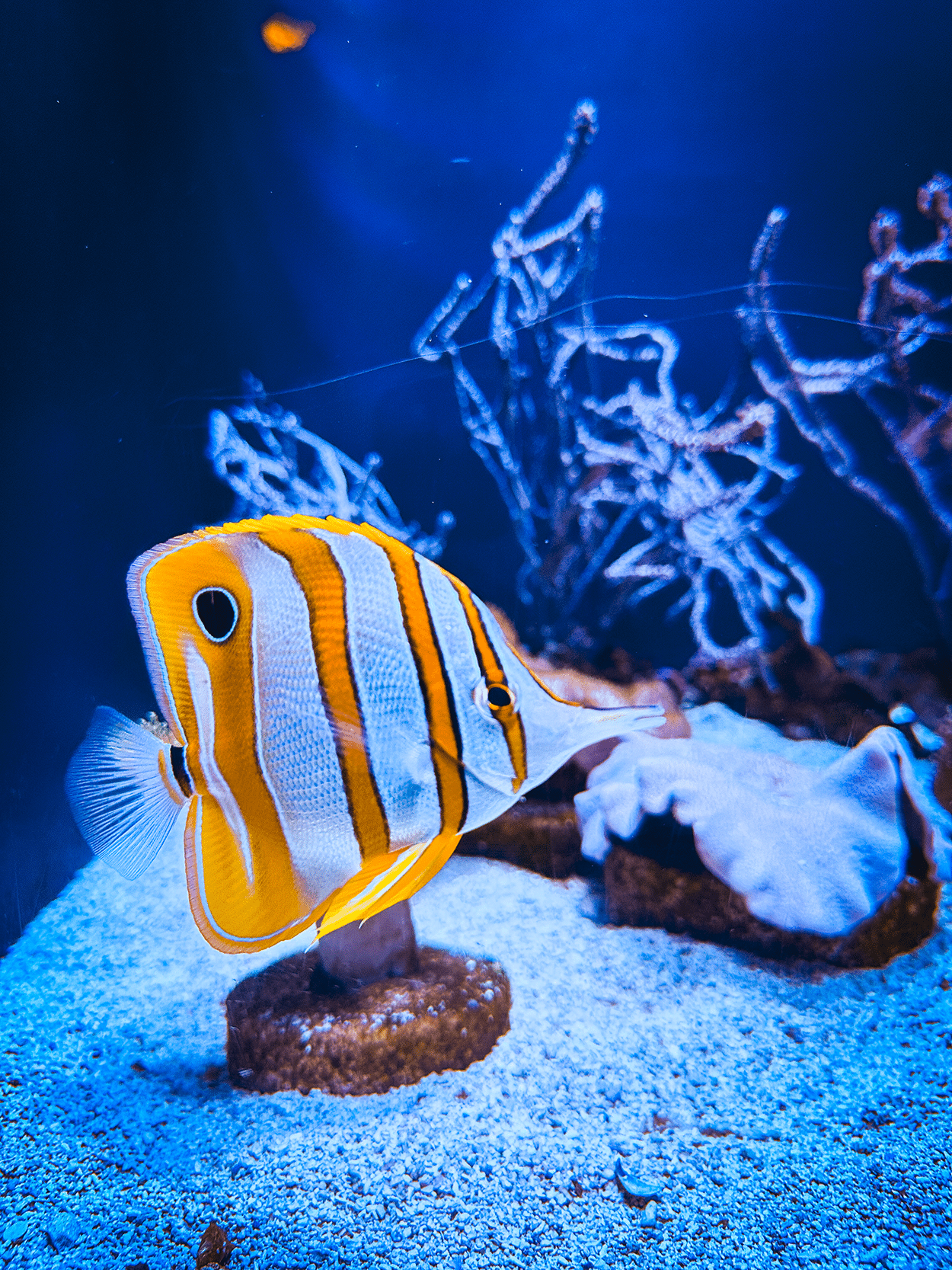
Visit to the Seattle Aquarium
Located on the Elliott Bay waterfront, the Seattle Aquarium is the region’s premier resource for marine conservation in the Pacific Northwest. The public aquarium (but not free!) is filled with a variety of fish, marine mammals, an aquarium cafe, hands-on activities, and educational programs.
While not big, compared to the National Aquarium in Baltimore or the Osaka Aquarium, the aquarium is a great place to hang out on a rainy day in Seattle, or if you want to cool off indoors on that random hot day in summer.
From babies and toddlers up to teens and tweens, families will love exploring the variety of exhibits, including ones dedicated to the amazing Puget Sound area and all of its aquatic inhabitants.
The Seattle Aquarium is on the Seattle CityPass, which if you are visiting Seattle is a great deal since it covers some of the top attractions in the city- Space Needle, Pacific Science Center, Chihuly Garden and Glass, Argosy Cruises Harbor Tour, Museum of Pop Culture (MoPOP), and the Woodland Park Zoo.
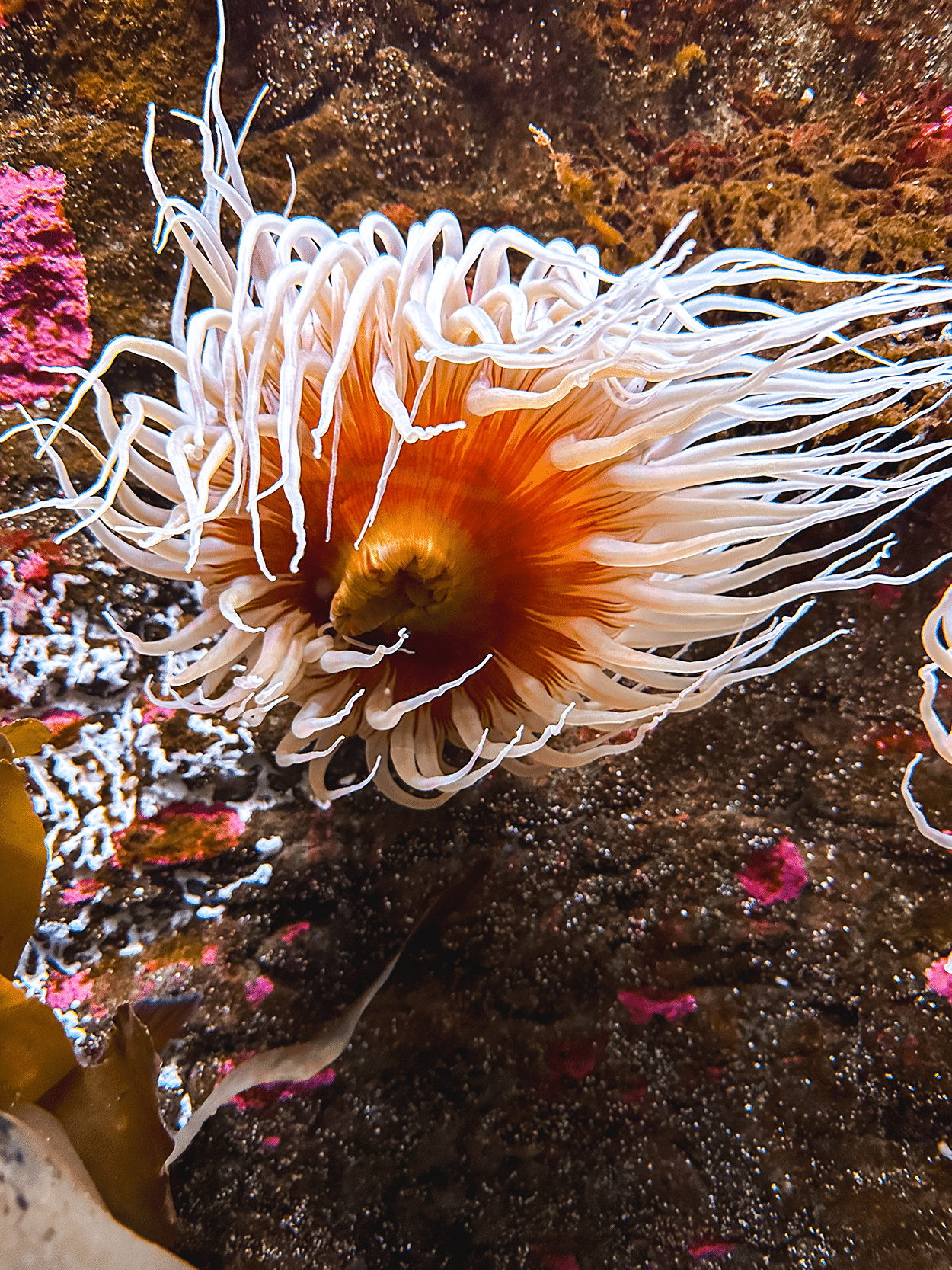
Marine Life Exhibits at the Aquarium
In case you didn’t know, the aquarium is located on two piers right on Elliott Bay, with walkways between the two. We tend to spend most of our time in Pier 59, which is where the touch pools and more exhibits are housed, while the larger mammals and birds are in Pier 60.
Pier 59
Window on Washington Waters
One of the first things you see when you enter the Seattle Aquarium is the “Window On Washington Waters” exhibit. This 120,000-gallon tank (with a 20×40 feet window) is designed to look like Neah Bay at the Northwest tip of Washington state. Hundreds of fish and invertebrates, like salmon, rockfish, sculpins, wolf eels, anemones, sea stars, sea urchins and corals, call it home, and chances are you will see a scuba diver or two cleaning the glass and checking on the fish.
If you time your visit right, you can catch the “Catastrophe by the Sea” puppet show or a diver presentation, where the scuba diver encourages questions about the animals in the tank. And if you visit during the holidays, you can also see Scuba Santa!
Crashing Waves
Creature Highlights
- Sea cucumbers
- Snails
- Limpets
- Surfperc
Turn the corner after the Window and you will come to the Salish Sea shoreline. The exhibit simulates what it looks like for creatures under the water who live close to the shore, where the power of the waves is constantly moving, even in this five-foot deep tank.
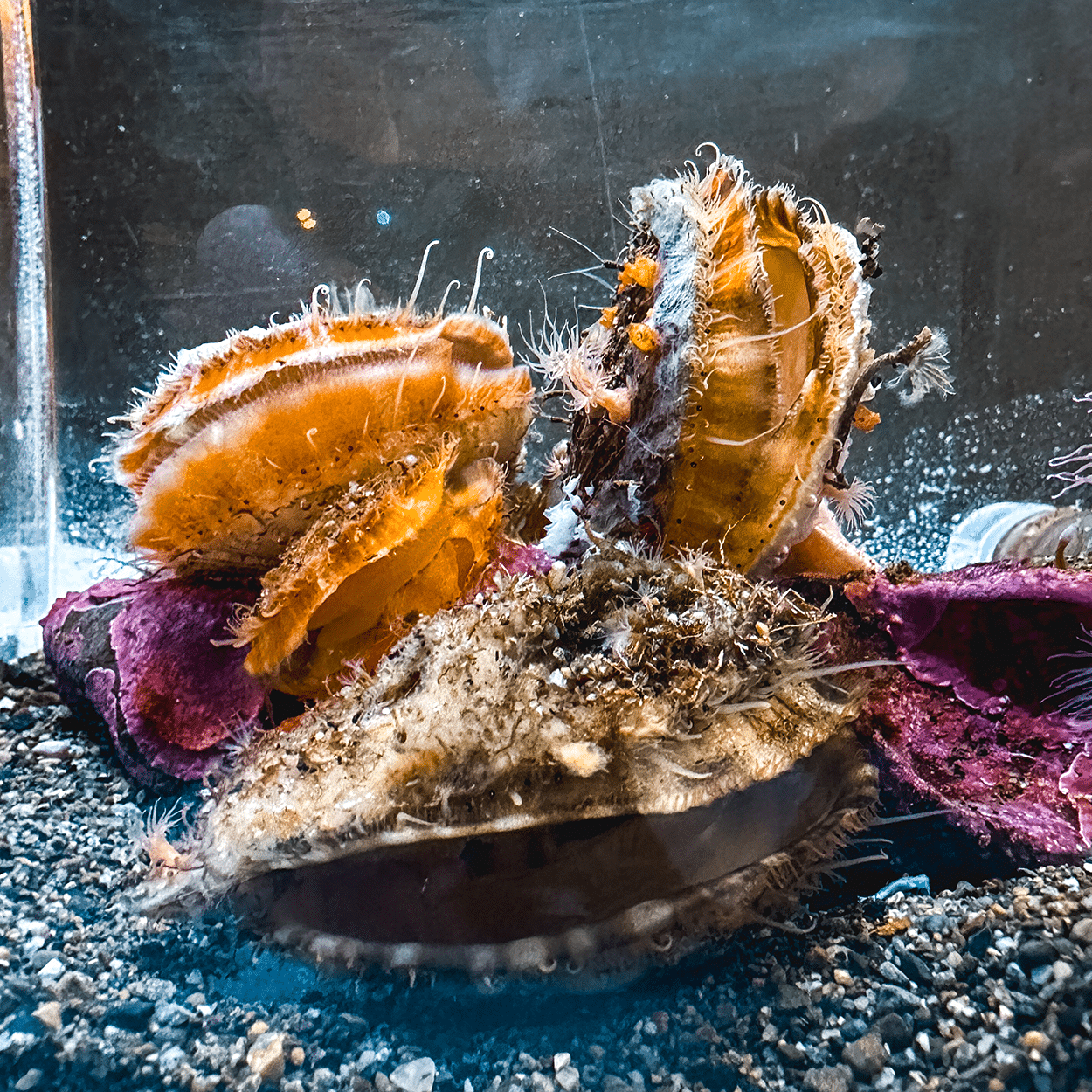
Life on the Edge
Creature Highlights
- Touch Pools (starfish, sea urchin, sea anemones, hermit crab, etc.)
- The Ring of Life (Jellyfish)
- Giant Pacific Octopus
“Life on the Edge” is my favorite place to hang out in the aquarium, and my kids know it’s for one reason– the jellyfish. I LOVE to photograph jellyfish. I also love the resident octopus, even though he tends to hide a lot.

The Touch Pools are also a great place for kids (and adults) to learn more about the sea creatures right off the coast of Washington and Oregon. While we have seen many of the animals in the tide pools out in the wild (Cannon Beach during low tide is magical), being able to touch some of the animals of our world ocean makes it even more amazing.
Staff are always on hand to answer questions, and remind you to be gentle, using only one or two fingers at a time to touch the wildlife in the tanks.
There is a hand washing station that everyone should use before AND after they have their hands in the touch pool. Why before? Because we all have stuff on our hands, like lotion, bacteria, sunscreen, random crumbs, boogers and food stickiness, etc. It helps the pools stay clean if you wash up a bit before sticking your hand in the pools to say hello.
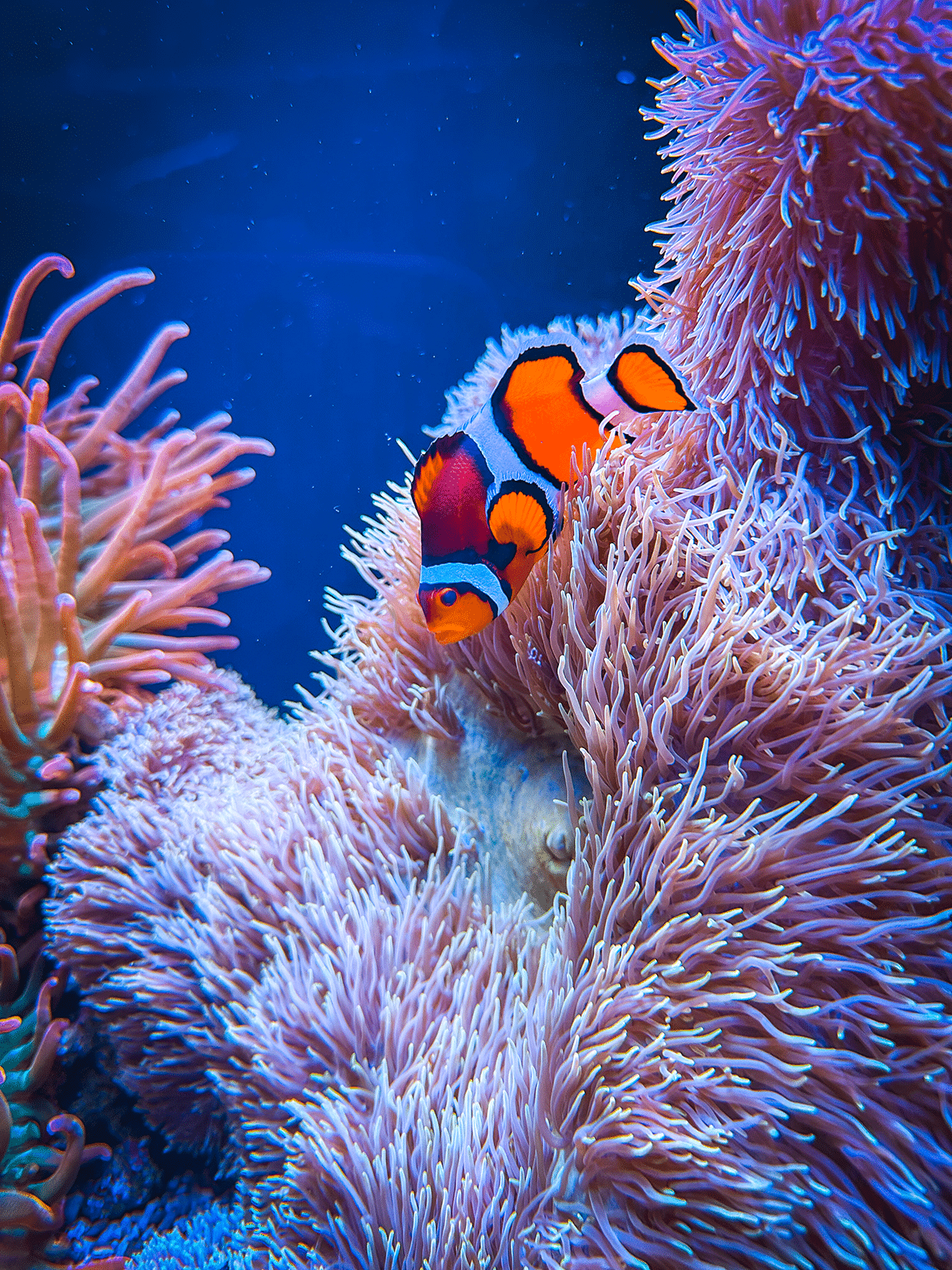
Hawai’i and the Pacific Coral Reef
There is only one non-Washington State focused exhibit in the aquarium, but it still connects to the state. The “Pacific Coral Reef” is 25,000-gallon habitat that shows off what neighboring areas, like the islands of Hawai’i, look like underwater.
Clown fish and seahorses drifted around their tanks looking for food, while puffers, tangs, wrasses, triggerfish and more creatures wander around the coral gardens. Much of the coral is grown in the in-house propagation program, adding to this conservation of the marine environment educational exhibit.
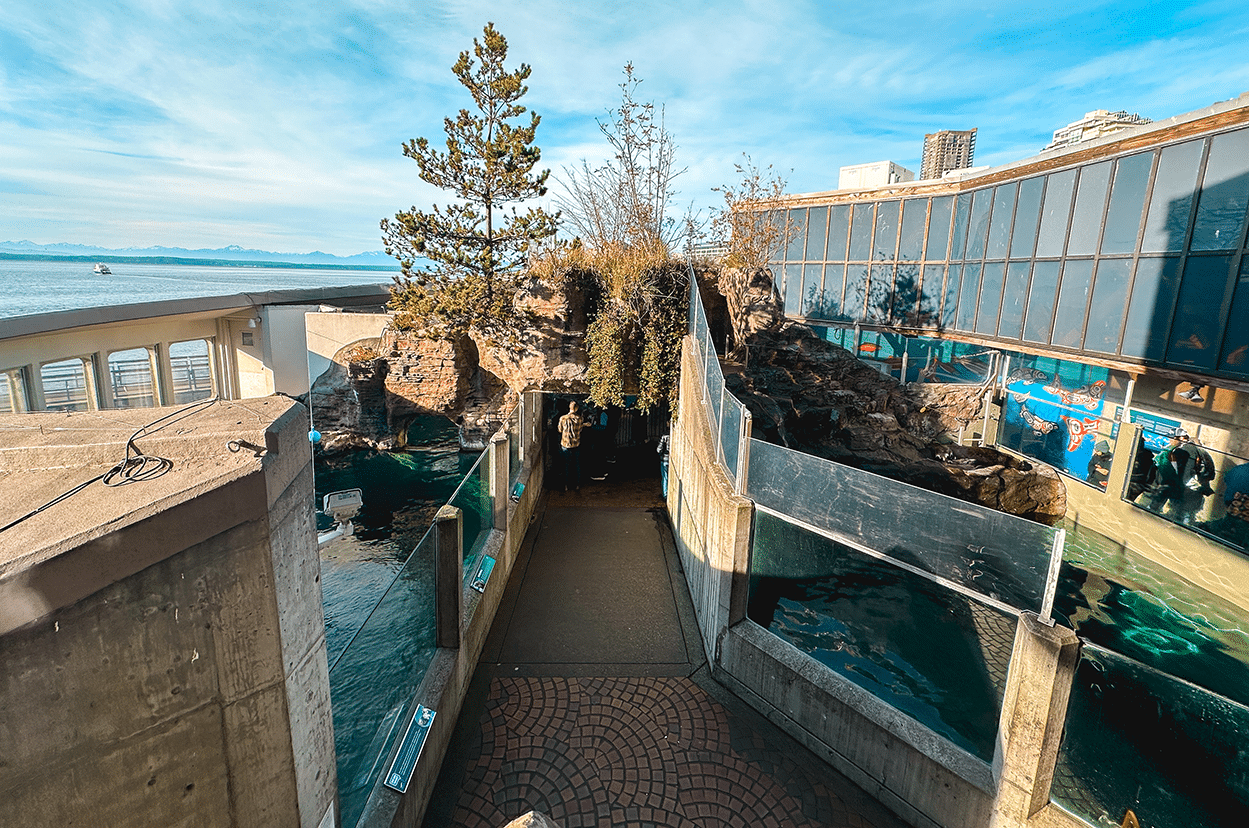
Pier 60
Marine Mammals Exhibit
Mammal Highlights
- River Otters
- Northern Fur Seals
- Sea Otters
- Harbor Seals
Before you head to the aquarium, or right after you enter, look at when daily talks and animal feedings will take place in the “Marine Mammals” exhibit.
This is the perfect time to see the animals in action, showing off the tricks they have learned, which actually help the aquarium staff keep the animals’ brains active, and gives the creatures a task to do when the vet is checking each animal out so they are less stressed and a well-check eve becomes something to look forward too (fishy rewards are the best!).
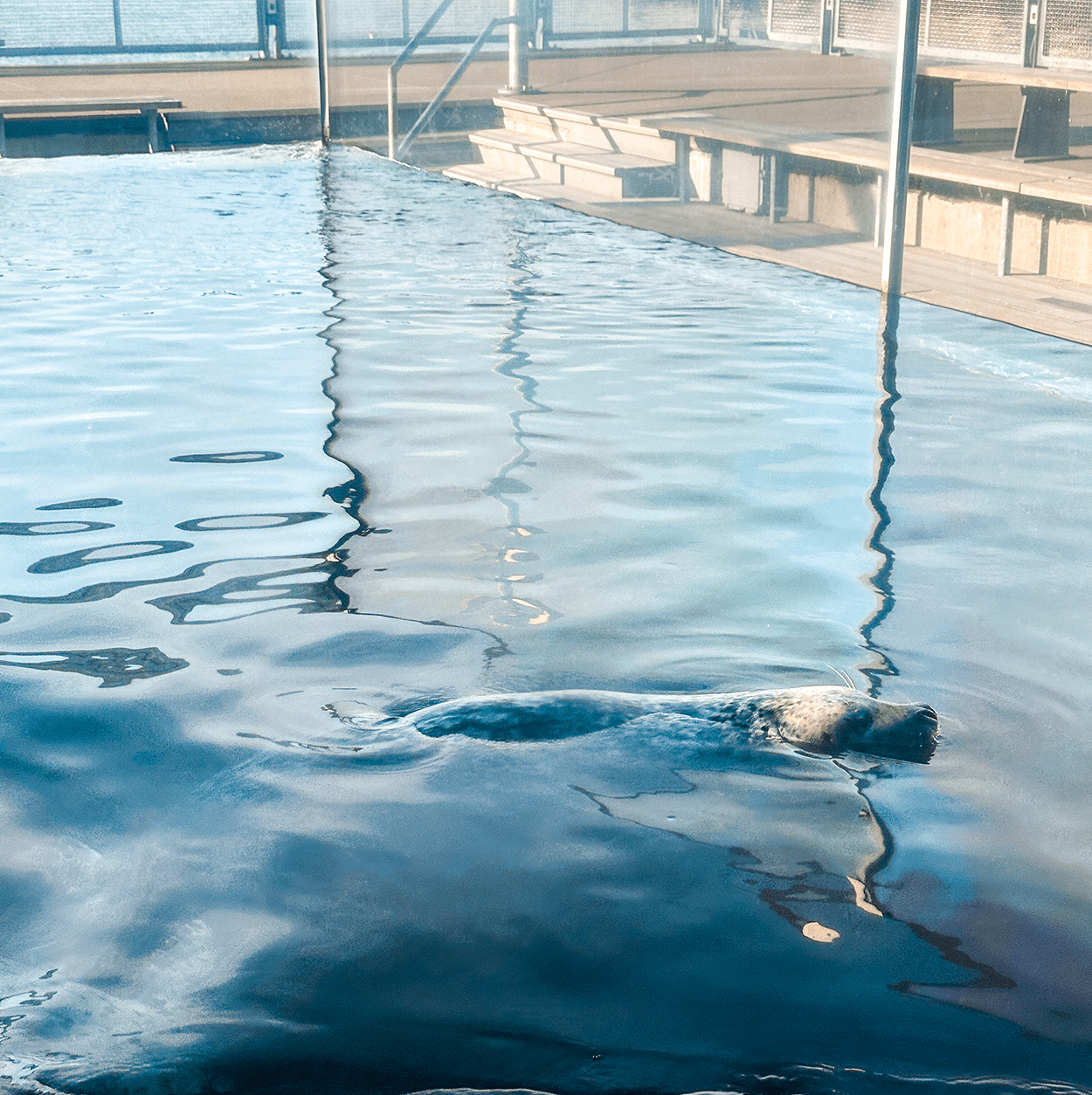
Underwater Mammal Viewing
Most of the mammal habitats have above and below water viewing areas. You can see a seal basking in the sun or gliding gracefully through the water. If the otters are awake, make sure you check out their playful nature, which always makes my kids laugh.
NOTE: The marine mammal exhibit is partially outside on Elliott Bay, so if it is raining, be prepared to get a bit damp.

Underwater Dome
Take a seat and let your kids marvel at the 360-degree view of Puget Sound fish in a 400,000-gallon habitat. This is a fantastic spot to pull out your sketchbook to draw the kelp, rockfish, open-water salmon, dogfish and lingcod swimming around and living life.
Sometimes you may spot a scuba diver in the tank, who, if you are lucky, will give you a high-five.
Puget Sound Fish
While you may think you have seen all of the fish of the Pacific Northwest already, there are still a few more you will want to check out in the “Puget Sound” exhibit space.
The eelgrass fish communities, which include grunt sculpins and Pacific spiny lumpsuckers, are major part of the Puget Sound ecosystem, so much so that they are protected by local and federal governments.
You will also meet fish from the deep sandy bottoms and rocky areas of the Sound, including the wrymouth, split-nose rockfish, midshipmen fish and armored sturgeon poachers.
Salmon Life Cycle
And trip to the PacNW would be complete without learning more about salmon. After all, Seattle residents LOVE salmon (I’m pretty sure it’s the first fish my kids ever had).
You and your kids can learn more about the trek salmon make from their fresh-water rivers to the ocean and then back up to spawn, all while trying to avoid hungry bears and other predators. The exhibit is a great place to see every stage of a salmon’s life too, from egg to alevin to fry to yearling.
NOTE: Be aware that who you see and at what stage the fish are in will depend on what time of year you are visiting.
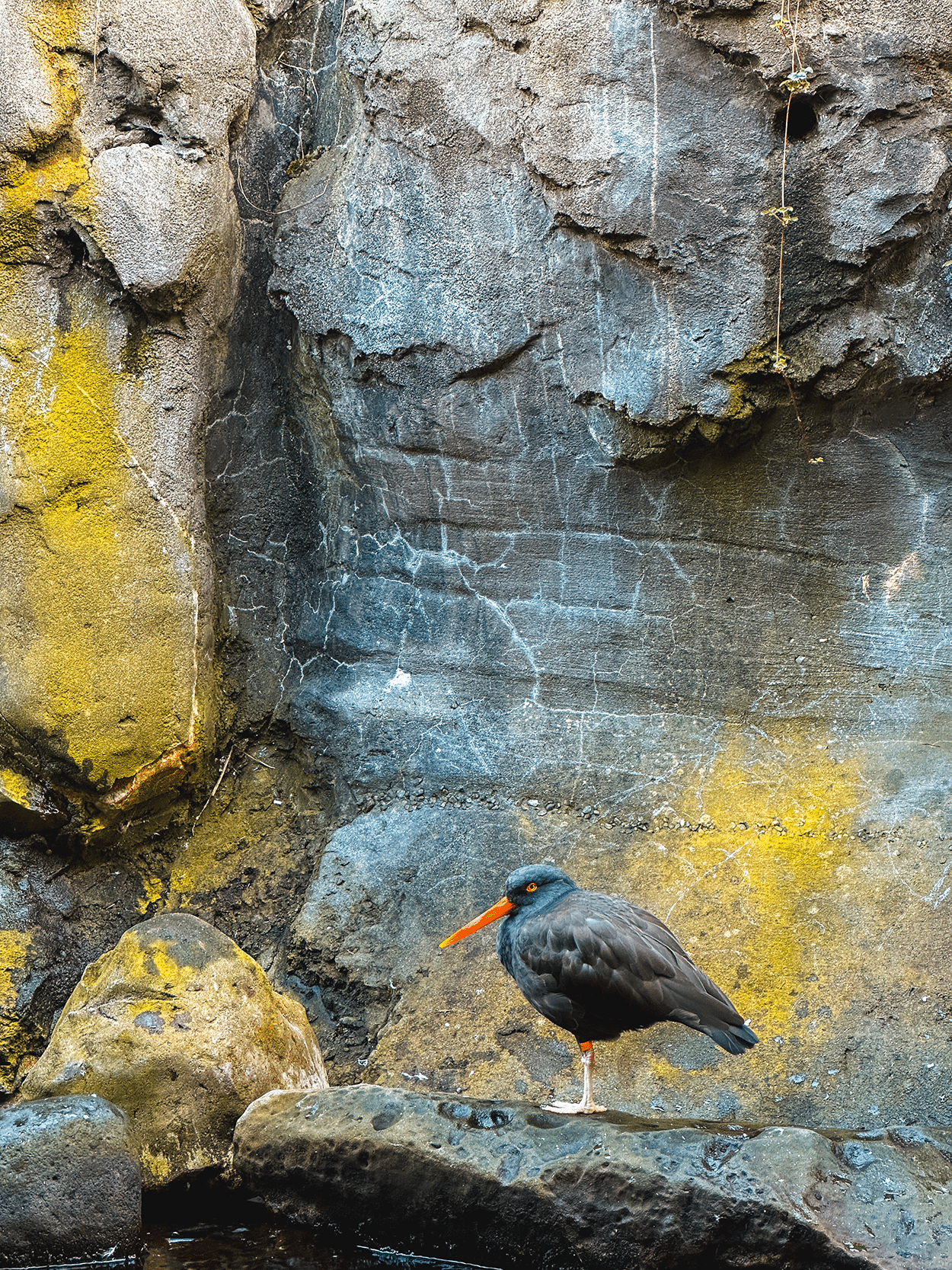
Birds & Shores
Did you know that the Pacific Northwest has puffins?! I didn’t until our first trip to the aquarium. Head outside to see tufted puffins, rhinoceros auklets, common murres and black oystercatchers.
You will notice that the habitats include rocky areas, which mimic where birds would build their nests and hide in the wild. Since these are birds who are used to living by the sea (and even on the ocean), you will see tanks below the surface filled with fish and invertebrates, like rockfish, sea anemones, sea stars and sea urchins, who would be living in the same space as the birds out in the wild.
Seattle Aquarium Cafe
- Address: Second level above the Ackerley Foundation Puget Sound Hall, Pier 59
- Hours: open daily 9:30am–4pm
- Admission: you must have paid for entry to the aquarium in order to access the cafe
If you get hungry, and didn’t pack a lunch, you can order coffee and curate sustainable dishes highlighting the best ingredients and supplies from farms, ranches and fishmongers in the PacNW. I love that they strive to use sustainable packaging whenever possible, which produces less
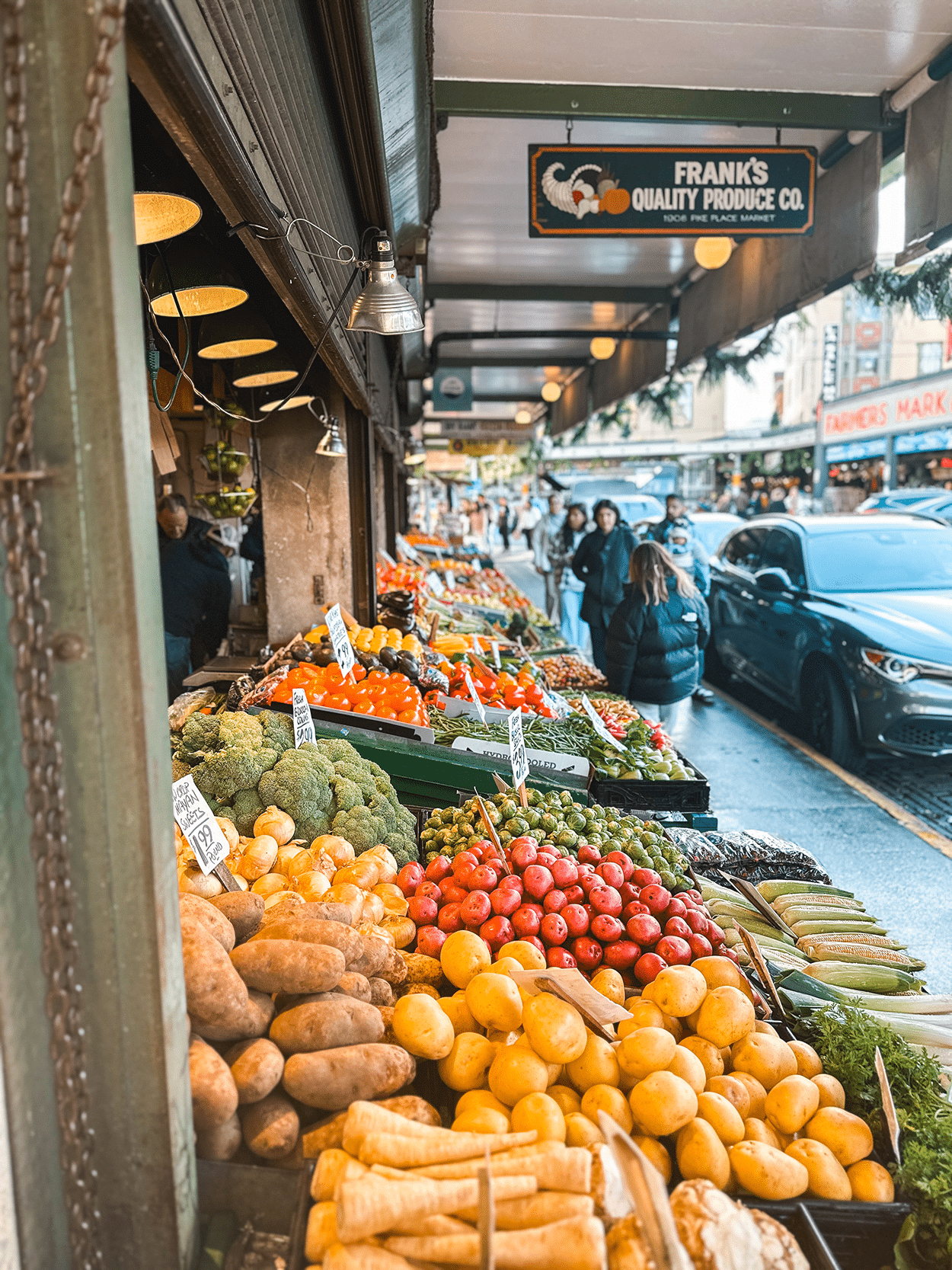
Not a fan of Aquarium food? Check out these Pike Place Market favorites who have withstood the test of time:
- Three Girls Bakery: Get a sandwich at the counter or sit at the counter. My favorite is the chicken salad sandwich!
- The Crumpet Shop: Don’t miss out on their specialty offerings and tea selection.
- DeLaurenti: Perfect for a slice of pizza, but don’t skip the chocolate chip cookies- the best in town!
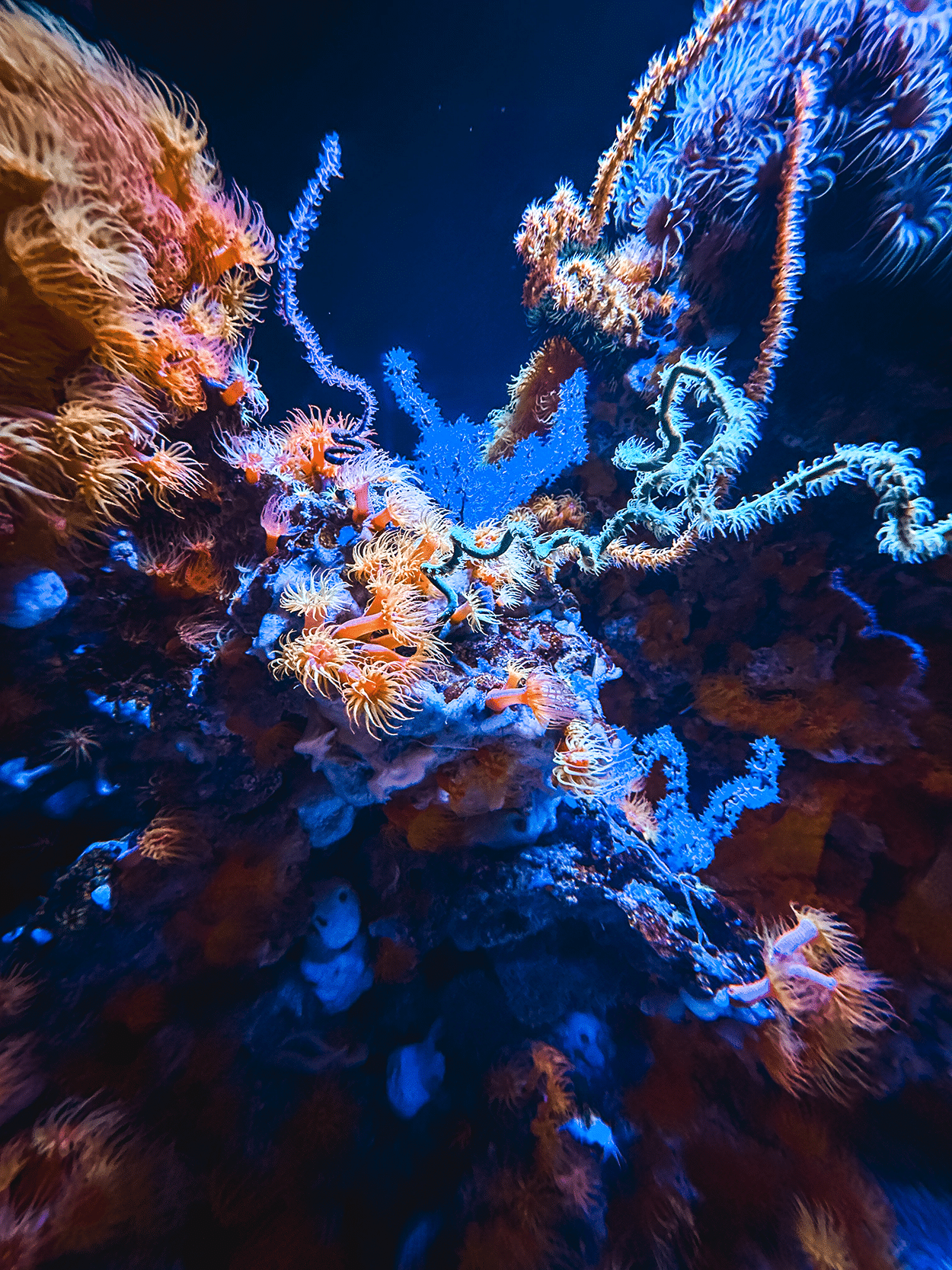
Facilities
There are several bathrooms throughout the aquarium, as well as a nursing area, stroller parking, and water bottle filling station.
Gift Shop
I’m a sucker for a good gift shop and the Seattle Aquarium gift shop does not disappoint. Just be prepared for a lot of “Mom! Can I have this?” and “Please, Please, PLEASE!” when you walk in.
If I plan on going into the gift shop I try to set expectations before we even walk into the aquarium. My youngest loves merchandise, and will beg for everything and anything (especially stuffed animals), so I do one of three things:
- I either give my kids a budget they can work with
- I tell them they have to use their own money
- I let them know we are not buying anything today
It doesn’t always stop the whining, but it does decrease it, and it got my boys used to what to expect from me in gift shops since we go to a lot of museums, aquariums and zoos. Bonus: it also taught them how to save their money and really think about what they buy.
Virtual Reality
ADDITIONAL FEE. Go under the ocean with the Underwater Explorer VR program that allows you to feel like you are swimming along with the fishes.
Each session (varying in length) introduces you to creatures you probably won’t see in the aquarium, but are just as important to learn about, like humpback whales near Tonga or the manta rays of Mozambique, which are currently being threatened.
Veterinary Care Center
As you walk by the Veterinary Care Center, peek in the window to see who is getting checked during your visit. You can also check the whiteboard by the window to see what is on the schedule for the day. The aquarium vets are happy to show off how they are caring for the animals.
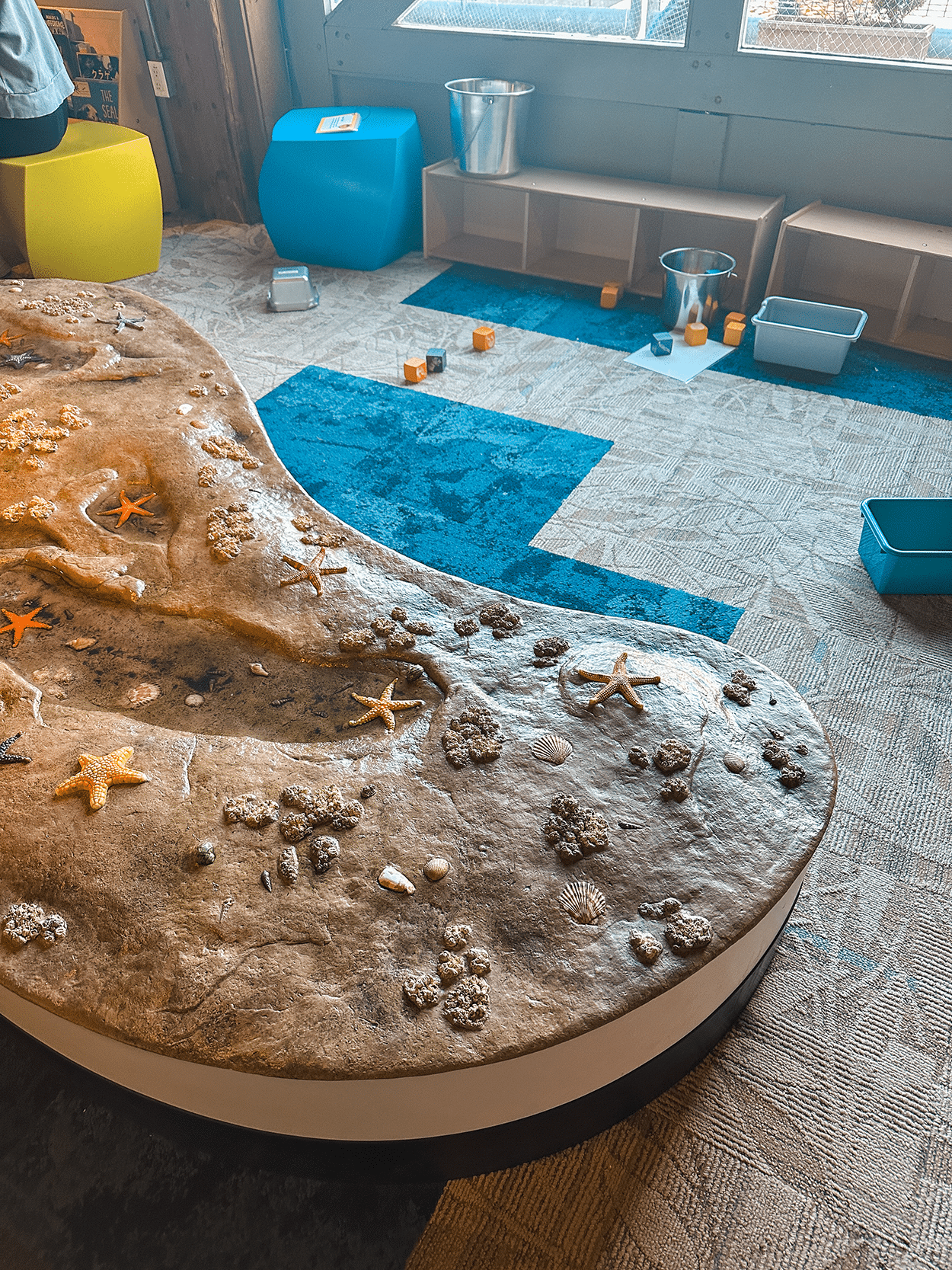
Caring Cove Play Space
Sometimes you just have to get the wiggles out, which is when the Caring Cove comes in handy. This long play space gives kids plenty to do, whether playing with stuffed animals and blocks, learning more about the animals they are seeing, giving the plush animals a checkup, creating a pretend meal for the animals, and there is even an artificial tide pool area if you want to practice gentle touching before you go to the Touch Pools.
NOTE: This space is designed for younger kids, toddlers up to 10 years old, so please keep older children out of this safe space, unless it is a teenager looking after a younger sibling.
Puget Sound Attraction
Although the Seattle Aquarium is much small than others we have visited, it is still one of the top attractions in the Puget Sound. There are no sharks or whales like at other aquariums in the United States, but it still packs in a morning of fun and learning.
You could certainly tell that care and attention had been paid to the limited number of exhibits the aquarium does have. Sometimes less really is more, especially if you are visiting with a baby or toddler.
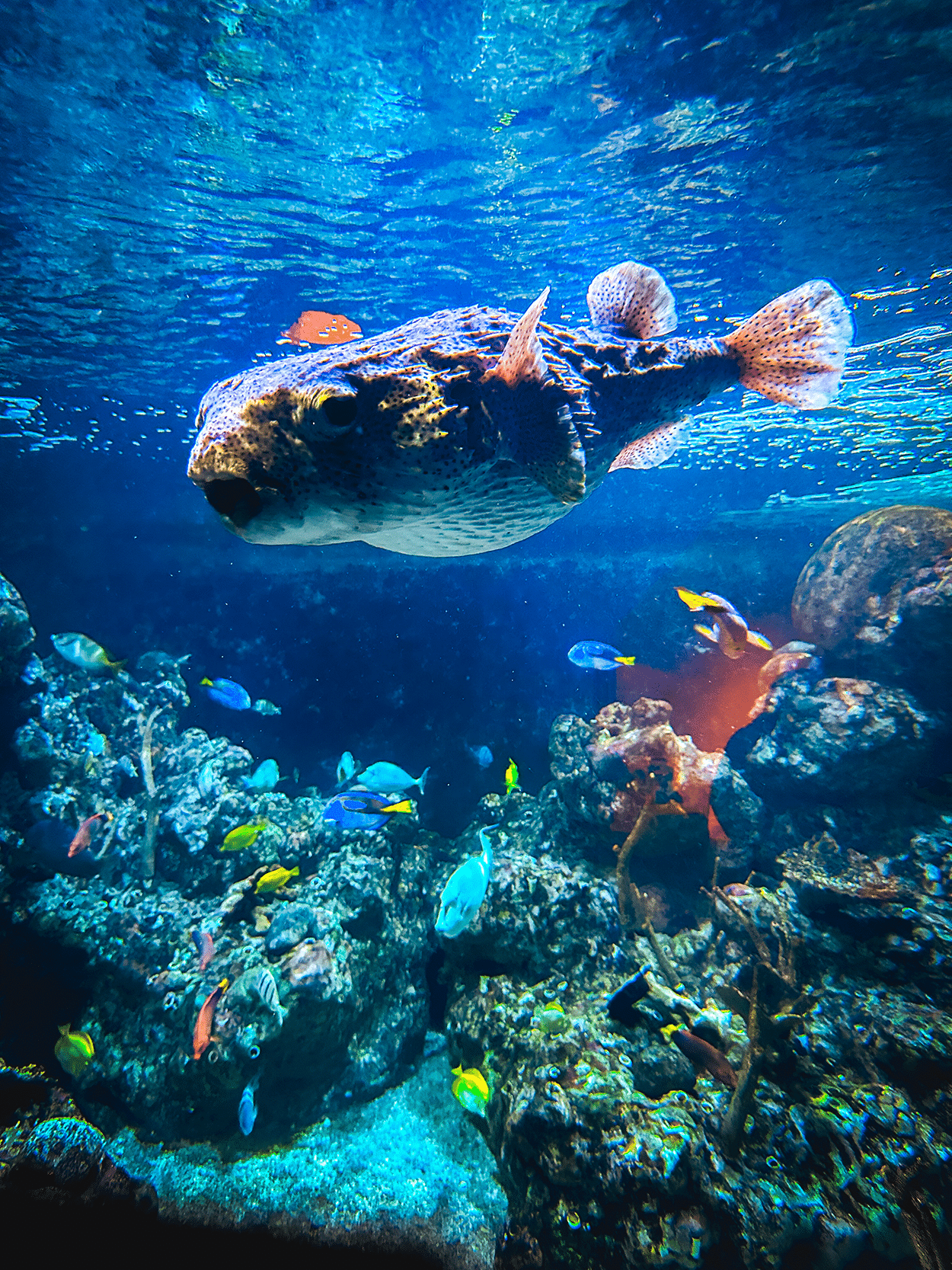
Seattle Aquarium Information:
Admission Discounts
- Children under age 3 are free
- Special Discounts: $2 off admission, which are only available at the admission gate the day you visit, applies to the Senior Discount, Tribal Discount, Military Discount, and Persons with Disabilities (aides enter for free).
- FLASH Card-holders: free entry with one aide
- Microsoft Prime Employee Cardholders: discounts on and youth admission
- Foster and Kinship Families: Free general admission tickets for adults, youth and children (or discounts on annual membership)
- Recipients of EBT/WIC Providerone Services: Deep discounted one-time-use admission tickets or an annual membership ($5 per person last we checked)
- Seattle Public Library and King County Library cardholders: you can print out free passes (up to 4 adults/youth) through the library. You can only reserve one pass to a museum once every 30 days though, and new passes go live at 12pm each day.
CityPASS Seattle
Seattle CityPASS is accepted at the aquarium along with other top Seattle attractions. The pass lasts for 9 days and is definitely worth it if you plan on hitting several museums, the Woodland Park Zoo and the Seattle Space Needle.
INCLUDES ADMISSION TO 5 ATTRACTIONS TOTAL
- One visit to: Space Needle and Seattle Aquarium
- Plus get admission to 3 more attractions (you pick!)
- Chihuly Garden and Glass
- Argosy Cruises Harbor Tour
- Museum of Pop Culture (MoPOP)
- Woodland Park Zoo
- Pacific Science Center
Buy Your Seattle CityPass HERE
Aquarium Hours
9:30am-6pm, check site for holiday closings and reduced hours
Food Options
You can pack a lunch. Areas are designated where you can hunker down and eat them. The upstairs café (open 9:30pm-4pm) does not allow outside food. If you want more variety, you can walk up the steps to Pike Place Market where there are loads of takeaway options and even some sit down spots.
Bathrooms
There are several bathrooms throughout the aquarium, and there are changing tables in the restrooms
Best time to visit
Weekdays during the school year are relatively quiet except if school group shows up. Holidays and summers are the busiest times to visit, especially when the cruise ships are in port.
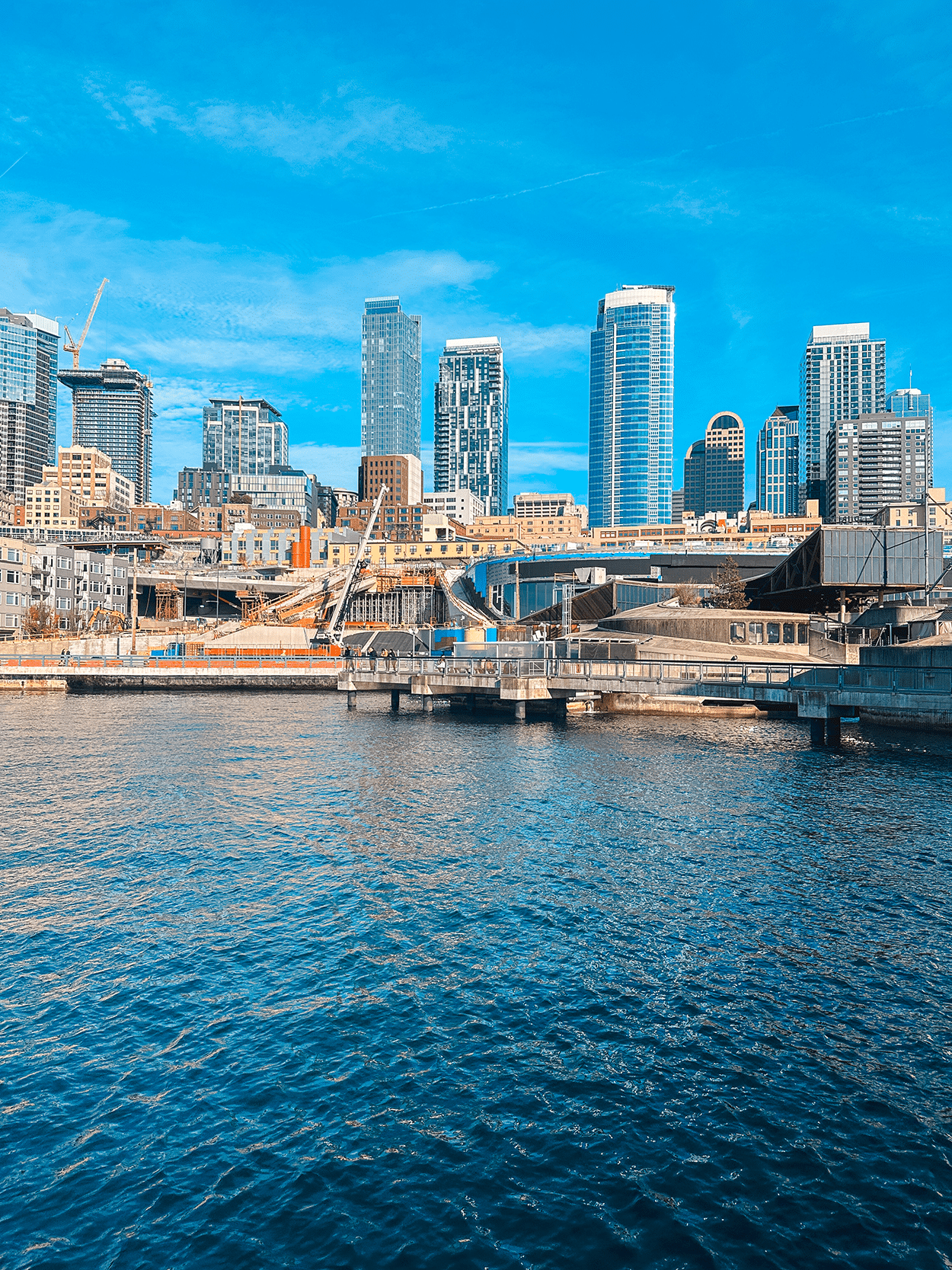
Parking at Seattle Aquarium
- Address: Seattle Aquarium, 1483 Alaskan Way, Pier 59, Seattle, WA 98101
The aquarium is located right on the waterfront, so if you are already checking out the Seattle Great Wheel, you can just walk over. If you are in Pike Place Market, you can walk down the steps by the Gum Wall to the aquarium.
If you are driving in specifically for the aquarium, there are a few spots you can park.
SpotHero
To make sure you get a spot at the parking garage you want, check out the Seattle Aquarium’s SpotHero page for deep discounts on parking. While you will want to get a spot in the Pike Place Market Garage, there are also plenty of parking lots and garages on 1st, 2nd and 3rd Avenues between Pine and University Streets, which will still put you in easy walking distance to the aquarium, as well as many other Seattle attractions.
I used to work in offices in Pike Place Market and later on 2nd and Union, trust me, there are a LOT of garages. You will find a space.
Pike Place Market Garage
The market has three garage entry points:
- 1531 Western Avenue
- 1901 Western Avenue
- 1530 Alaskan Way
Street Parking
There is some street parking, but ever since they took down the Viaduct, street parking has become even more limited. Any spot you find on Alaska Way will metered spot, so make sure you pay the machine. Most are four-hour meters, but always check signs before you walk away from your car, and ALWAYS LOCK YOUR CAR and hide valuables.
You might also be able to find street parking east of Pike Place on 1st, 2nd and 3rd Avenues, but again, these will be metered, so make sure you pay the machine.



Comments are closed.